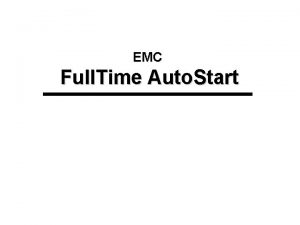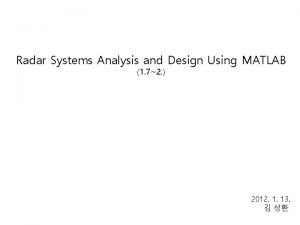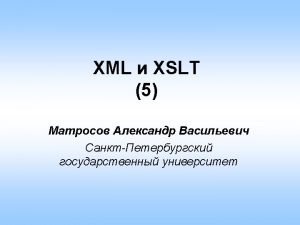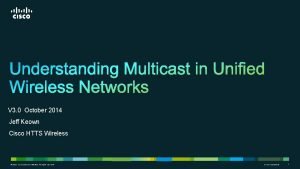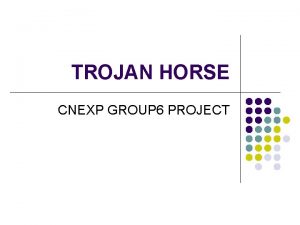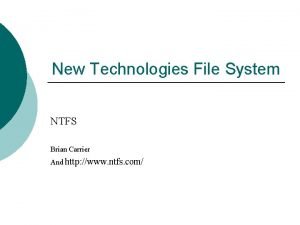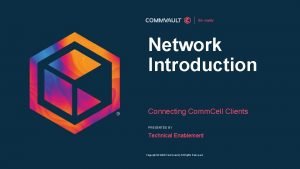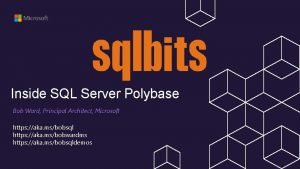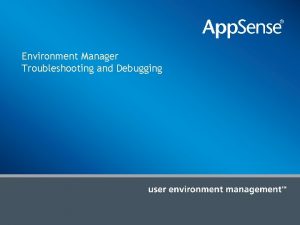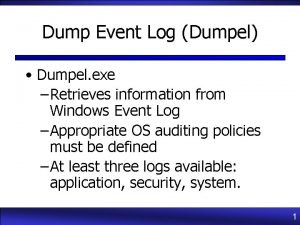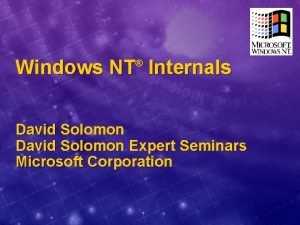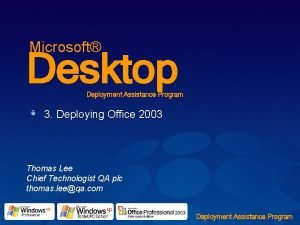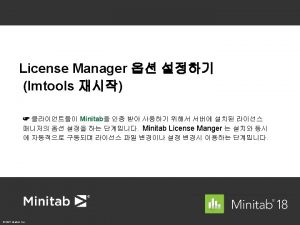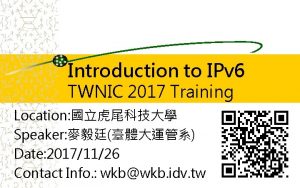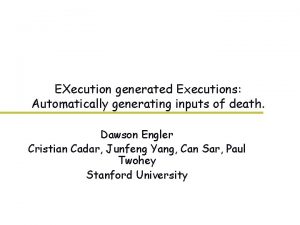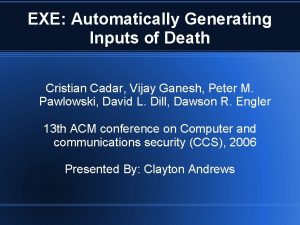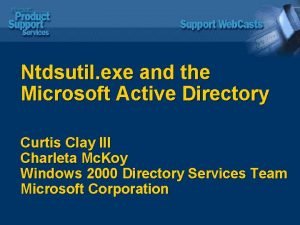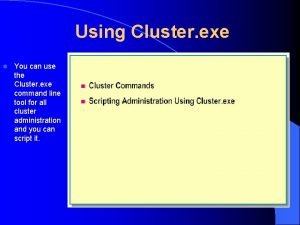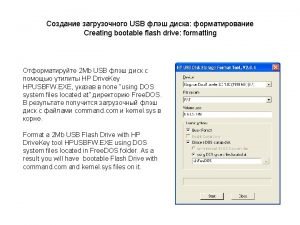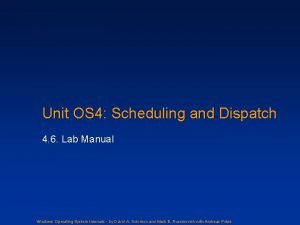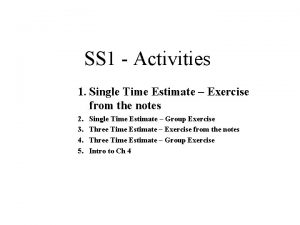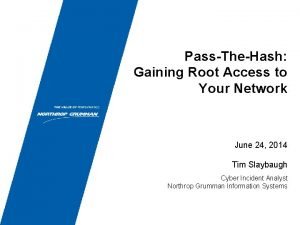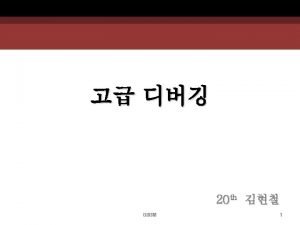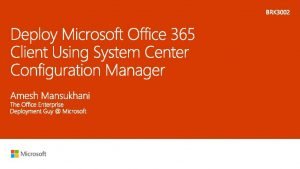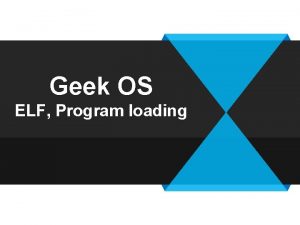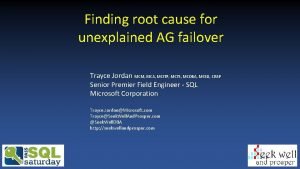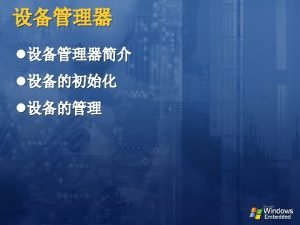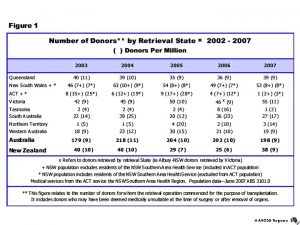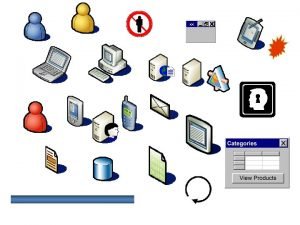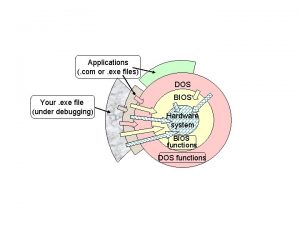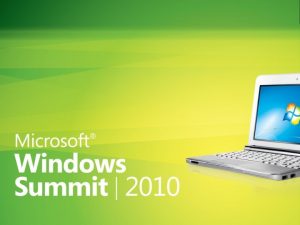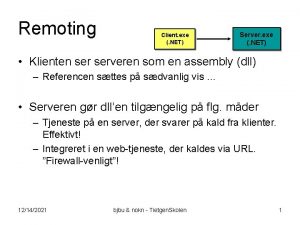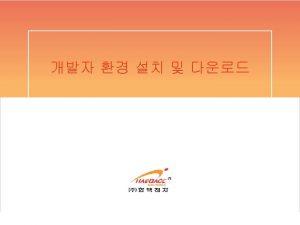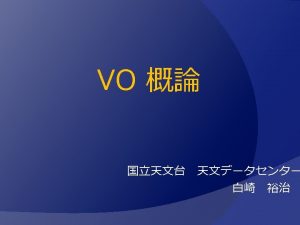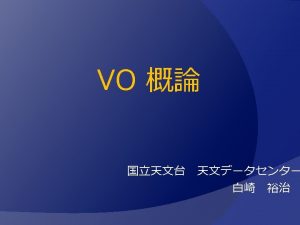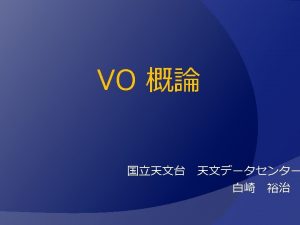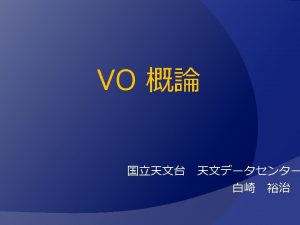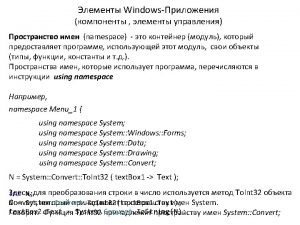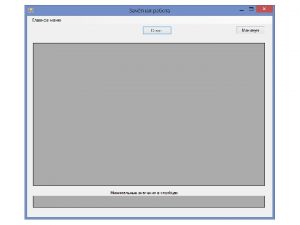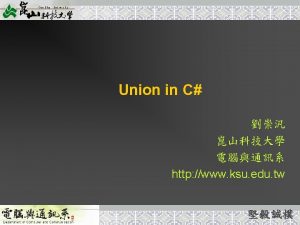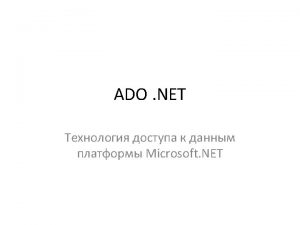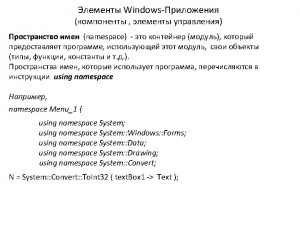Registry Analysis Using regedit exe System Information Autostart





































- Slides: 37

Registry Analysis • Using regedit. exe – System Information – Autostart locations – USB Removable Storage Devices – Mounted Devices – Finding Users – User Activity – Restore Points

System Information • Located in the Current Control Set • If the systemm is not active must find the Control Set that was current • • Time zone Shares Audit policy Wireless SSIDs

Current Control Set • Current. Control. Set is a volatile portion of the Registry • Which of the 2 or more Control Sets are Current • The following indicate that #1 is current

Time Zone Information • SYSTEMControl. Set 001ControlTime. Zone. Information

Computer Name HKLMSYSTEMControl. Set 001ControlComputer. Name

Shutdown Time HKLMSYSTEMCurrent. Control. SetControlWindows HKLMSYSTEMControl. Set 001ControlWindows Time is measured in the number of 100 -nanosecond intervals since 1 January 1601.

Shares • Windows 2 K, XP, 2003, and Vista create a number of administrative shares – IPC$ - IPC share – ADMIN$ - shares that refer to the root of dirves C$, D$, etc. • User enabled shares show up in HKLMSYSTEMCurrent. Control. SetServicecslanmanserverShares

Network. List - Profiles

Network. List - Signatures

Wireless SSIDs • XP Laptops maintain a list of service set IDs • The GUID is associated with the wireless interface • Under the Static#000 x lists all of the SSIDs connected

SSIDs A different Static#000 x for each SSID ever connected to.

SSID Registry Entry At offset 0 x 10 is a DWORD (4 bytes) that contains the length of the SSID, remember little endian. “ 0 b 00 00 00” = 0 x 00 00 00 0 b = 1110 SSID Length SSID

Autostarts • Applications that are launched without any interaction from the user • Often at boot time • Occasionally upon launch of a app.

Autostart Locations • Auto-start extensibility points (ASEPs) • Registry locations • • HKLMSOFTWAREMicrosoftWindowsCurrent. VersionRun HKCUSOFTWAREMicrosoftWindowsCurrent. VersionRun And elsewhere All over the place

Autostart Locations • Start -> run -> msconfig • Lists some of the acknowledge startups

Startup Locations

Other Startup Locations • System boot • User Login • User Activity • See Carvey’s Ch 4 spreadsheet for more locations

System boot • Startup services at boot time are contained in • • HKLMSYSTEMCurrent. Control. SetServices The services are enumerated with parameters Should be sorted by Last. Write. Time Only possible in FTK or Pro. Discover

Control. SetServices

Boot Time Apps Start value = 2, the app starts on boot time. Star value != 2 starts on user logon

Evil Start Time Services • Generally Last. Write times should be about the same time the system was built. • Later dates would suggest that an intruder of sysadmin was altering the boot time sequence

User Login • Startup Keys are parsed in order when a user logs in: 1. HKLMSoftwareMicrosoftWindowsCurrent. VersionRun. Once 2. HKLMSoftwareMicrosoftWindowsCurrent. VersionPoliciesExplorerRun 3. HKLMSoftwareMicrosoftWindowsCurrent. VersionRun 4. HKCUSoftwareMicrosoftWindows. NTCurrent. VersionWindowsRun 5. HKCUSoftwareMicrosoftWindowsCurrent. VersionWindowsRun 6. HKCUSoftwareMicrosoftWindowsCurrent. VersionWindowsRun. Once • The run keys are ignored if started in Safe Mode

#3 On the Startup List

User Activity • On user action certain registry keys are accessed • Keys for other Classes of files control what happens when that file is opened • Or when the file is double-clicked

Example • Go to: HKLMSoftwareMicrosoftCommand. ProcessorAuto. Run Right click on Auto. Run Select Modify Enter sol. exe in the Value data: field. Start -> run -> cmd. exe • This is the how one can modify application behavior • Used by much malware to launch backdoors or an IRCbot

Auto. Runs from Sysinternals

Hijacked App

USB Devices • Tracking USB devices • When mounted on Windows they leave • Footprints in the Registry • Artifacts in the setupapi. log file • The Pn. P Manager queries the device descriptor • Located in the thumb drive’s firmware • Log updated • Creates a Registry Key in HKLMSystemCurrent. Control. SetEnumUSBSTOR

USBSTOR Key

Device Held ID Cd. Rom&Ven_San. Disk&Prod_U 3_Cruzer_Micro&Rev_6. 61 Manufacturer Model Device class ID Version Unique Instance ID Serial Number

System Created Key Disk&Ven_JMTek&Prod_USBDrive&Rev_7. 77 Manufacturer Device class ID Model Version Unique Instance ID No Serial Number Made up by system

Device Information • HKLMSYSTEMMounted. Devices • List of recently Mounted Devices • Look down the list for Dos. Devices • The REG_BINARY data field should start with 5 C 00 3 F 00 • To find which device this is right click on the device • Select Modify

USBSTORE Unique Instance ID Serial Number Parent. Id. Prefix

USB Devices Tracking • By correlating Parent. Id. Prefix form Mounted devices and USBSTORE one can generate a timeline • Current. UserSoftwareMicrosoftWindows Current. VersionExplorerMount. Points 2 • May give more information

Mounted Devices

Binary Data in Dos. DevicesG: Parent. Id. Prefix matches the Kingston Traveler in the USBSTORE key

Research Topic • USB devices • Some USB Devices have a Device ID, others do not • Some generate a Parent. Id. Prefix others do not • Some Correlate to the Mounted. Devices ID others do not • Sort it out • Use references to the Microsoft Knowledge Base
 Registry autostart locations
Registry autostart locations Emc autostart
Emc autostart System.collections.generics
System.collections.generics Radar systems analysis and design using matlab
Radar systems analysis and design using matlab Ms xml parser
Ms xml parser Jeff keown
Jeff keown Fport.exe
Fport.exe Nfi.exe
Nfi.exe Commvault port 8403
Commvault port 8403 Westexe moodle
Westexe moodle Mpdwsvc application
Mpdwsvc application Emagent.exe
Emagent.exe Dump event log
Dump event log David solomon microsoft
David solomon microsoft Rhs.exe
Rhs.exe Rc exe
Rc exe Hot.letter.exe
Hot.letter.exe Ork.exe office 2007
Ork.exe office 2007 Minitab license manager
Minitab license manager What is jing.exe
What is jing.exe Tunnelserver.exe
Tunnelserver.exe Exe: automatically generating inputs of death
Exe: automatically generating inputs of death Exe: automatically generating inputs of death
Exe: automatically generating inputs of death Msxsl.exe
Msxsl.exe Ntdsutil commands
Ntdsutil commands Rtcsrv.exe
Rtcsrv.exe Rmservice.exe
Rmservice.exe Cluster.exe
Cluster.exe How to use hpusbfw.exe
How to use hpusbfw.exe Cpustres
Cpustres Exe
Exe Pass the hash toolkit
Pass the hash toolkit Notepad exe download
Notepad exe download Noop.exe
Noop.exe Tracelog.exe
Tracelog.exe Geeks os
Geeks os Rhs.exe
Rhs.exe Enum.exe
Enum.exe

